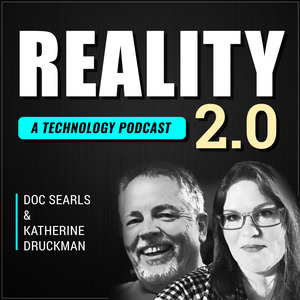Episode 76
Brian Fox on Voting Systems, Post-COVID Work, and Bash
July 2nd, 2021
1 hr 2 mins 55 secs
Tags
About this Episode
Katherine Druckman and Doc Searls talk to Brian Fox about voting systems, open source, work in the post-covid era, blockchain, programming languages, and more.
Reality 2.0 around the web:
Site/Blog/Newsletter
FaceBook
Twitter
YouTube
Mastodon
Episode Links
- Brian Fox (computer programmer) - Wikipedia — Brian Jhan Fox (born 1959) is an American computer programmer and free software advocate. He is the original author of the GNU Bash shell, which he announced as a beta in June 1989.[1] He continued as the primary maintainer of bash until at least early 1993.[2][3] Fox also built the first interactive online banking software in the U.S. for Wells Fargo in 1995,[4] and he created an open source election system in 2008.
- Opinion | To Protect Voting, Use Open-Source Software - The New York Times — Although Russian hackers are reported to have tried to disrupt the November election with attacks on the voting systems of 39 states, the consensus of the intelligence community is that they were probably unsuccessful in their efforts to delete and alter voter data. But another national election is just 15 months away, and the risk that those working on behalf of President Vladimir Putin of Russia could do real damage — and even manage to mark your ballot for you or altering your vote — remains. Since the debacle of the 2000 election (remember hanging chads?) American election machinery has been improved to reduce the chances of mis-tallying votes, outright fraud and attacks by hackers. These improvements brought with them a new concern: lack of software security. Most voting machines’ software can now be easily hacked. This is in large part because the current voting systems use proprietary software based on Microsoft’s operating system.
- Gerald Jay Sussman - Wikipedia — Gerald Jay Sussman (born February 8, 1947) is the Panasonic Professor of Electrical Engineering at the Massachusetts Institute of Technology (MIT). He received his S.B. and Ph.D. degrees in mathematics from MIT in 1968 and 1973 respectively. He has been involved in artificial intelligence (AI) research at MIT since 1964. His research has centered on understanding the problem-solving strategies used by scientists and engineers, with the goals of automating parts of the process and formalizing it to provide more effective methods of science and engineering education. Sussman has also worked in computer languages, in computer architecture and in Very Large Scale Integration (VLSI) design.[1]
- Lisp (programming language) - Wikipedia — Lisp (historically LISP) is a family of programming languages with a long history and a distinctive, fully parenthesized prefix notation.[3] Originally specified in 1958, Lisp is the second-oldest high-level programming language in widespread use today. Only Fortran is older, by one year.[4][5] Lisp has changed since its early days, and many dialects have existed over its history. Today, the best-known general-purpose Lisp dialects are Racket, Common Lisp, Scheme and Clojure.
- Pwnie Awards - Wikipedia — The Pwnie Awards recognize both excellence and incompetence in the field of information security. Winners are selected by a committee of security industry professionals from nominations collected from the information security community.[2] The awards are presented yearly at the Black Hat Security Conference.[3]
- Z shell - Wikipedia — The Z shell (Zsh) is a Unix shell that can be used as an interactive login shell and as a command interpreter for shell scripting. Zsh is an extended Bourne shell with many improvements, including some features of Bash, ksh, and tcsh.
